Wondering how to avoid cold weather damage this November? This guide will help you protect your home, vehicle, and personal safety from the upcoming cold. Learn about essential steps like preparing for winter storms, insulating your home, and readying your car to handle freezing temperatures.
Key Takeaways
- Stay informed about winter storm alerts to effectively prepare and respond to severe weather conditions.
- Properly prepare your home for cold weather through insulation, testing detectors, and applying weather stripping to enhance safety and efficiency.
- Maintain personal and vehicle safety by dressing appropriately, keeping an emergency kit, and ensuring your vehicle is ready for winter driving conditions.
Understanding Winter Storm Alerts
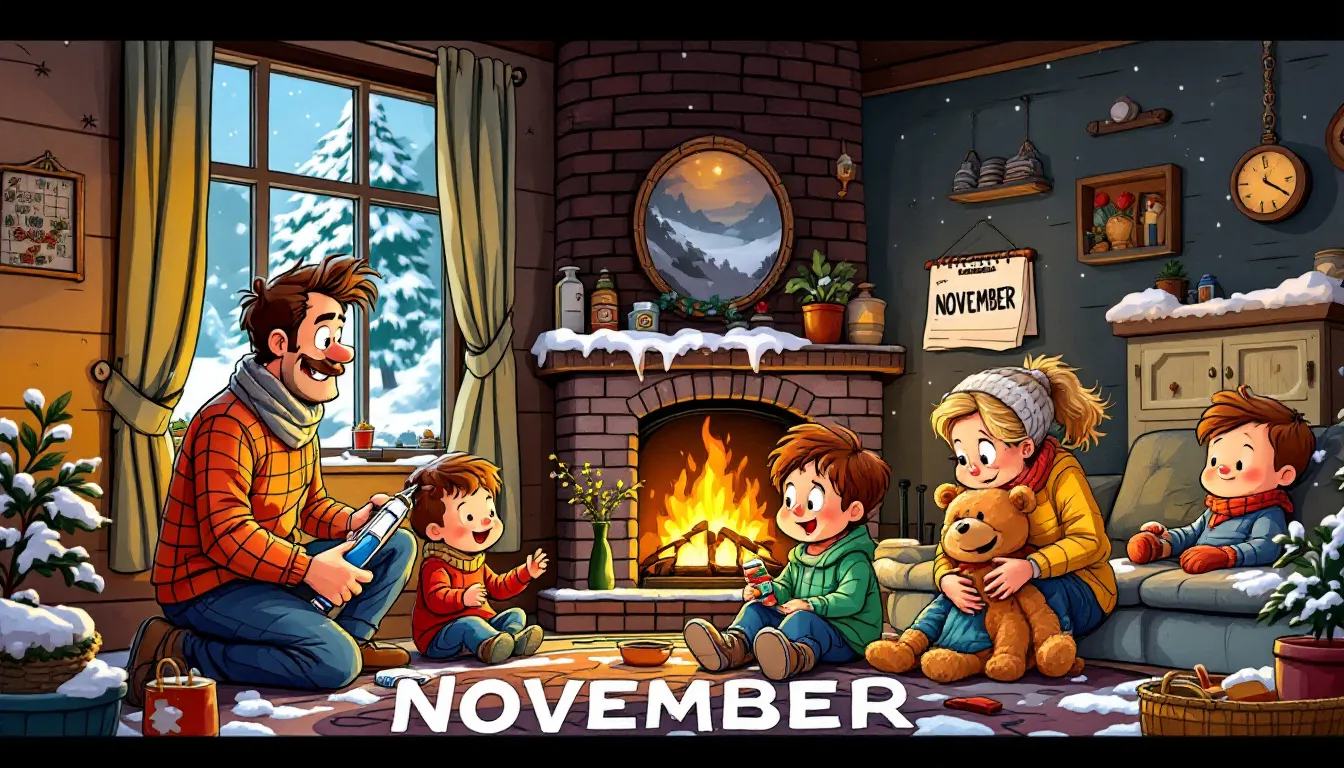
Navigating the winter season begins with staying informed about winter storm alerts. These alerts include:
- Warnings
- Watches
- Advisories They are crucial for preparing and responding to severe weather conditions. Winter storms can bring a mix of extreme cold, heavy snow, freezing rain, and high winds, making understanding these alerts essential for your safety.
Understanding the different types of alerts helps you take the necessary actions to protect yourself and your property. Whether it’s taking shelter, preparing your home, or planning your travel, knowing what each alert signifies helps you stay one step ahead of the storm.
Understanding the specifics of each alert allows for an effective response in various situations.
Winter Storm Warning
A winter storm warning is issued when severe winter weather is imminent, usually within 12 to 24 hours. This warning indicates that heavy snow, freezing rain, or sleet is expected, posing a significant threat to life and property. Under a winter storm warning, seek shelter immediately and prepare for potentially life-threatening conditions.
Stay informed by monitoring weather reports and local authorities during a winter storm warning. Ensure you have warm clothing, emergency supplies, and a safe place to stay. Remember, these warnings are not issued lightly, and taking them seriously can make all the difference in staying safe and secure.
Winter Storm Watch
A winter storm watch is issued when there is a potential for severe winter weather within the next 12 to 48 hours. This alert is a heads-up to start preparing for possible hazardous conditions. Unlike a warning, which indicates imminent danger, winter storm watches suggest that the conditions are favorable for a severe storm, but it has not yet materialized.
Under a winter storm watch, stay informed and start your preparations. Check your emergency supplies, ensure your home is weatherproofed, and plan your travel to avoid the storm. Taking proactive steps during a watch minimizes the storm’s impact and protects you and your loved ones.
Winter Weather Advisory
A winter weather advisory is issued when winter conditions are expected to cause significant inconveniences and potential hazards. This could include:
- Snow accumulation
- Freezing rain
- Freezing drizzle
- Sleet
While these conditions may not be as severe as those in a warning, they still require caution and preparation.
During a winter weather advisory, stay informed and take necessary precautions to ensure safety. Ensure you have adequate supplies and avoid unnecessary travel. Even though the conditions may not be life-threatening, they can still cause accidents and disruptions, so taking the advisory seriously is key to staying safe.
Preparing Your Home for Cold Weather
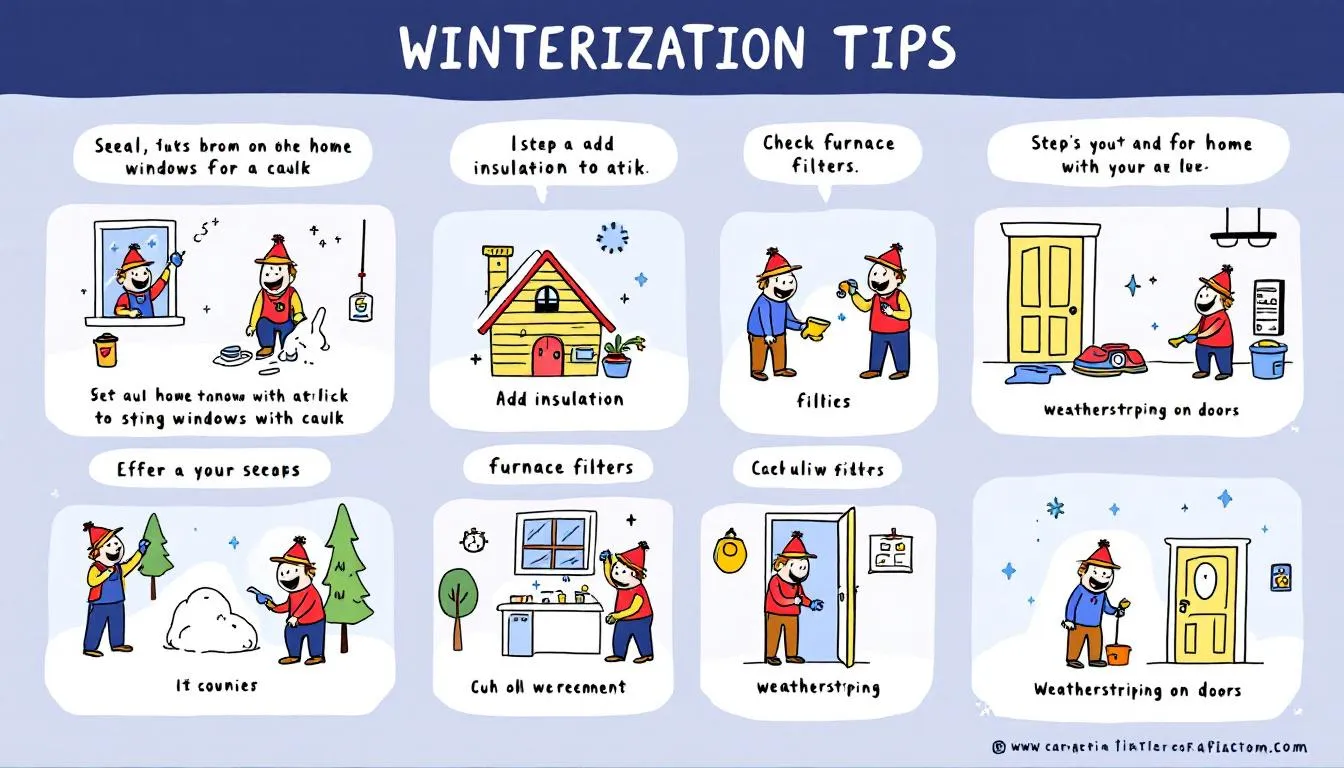
Preparing your home for the cold weather is crucial to ensure comfort and safety during the winter season. Proper preparation can significantly reduce energy costs and prevent damage from freezing temperatures. Insulating your home, testing smoke alarms and carbon monoxide detectors, and applying weather stripping create a warm and safe environment for your family.
Preparing your home helps stay warm, avoid costly repairs, and prevent health hazards. Let’s explore the steps you can take to make your home winter-ready and ensure it withstands the harsh weather conditions.
Insulate Your Home
Effective insulation is the cornerstone of a warm and energy-efficient home during the winter months. Proper insulation can save homeowners up to 30% on heating bills, making it a worthwhile investment. Installing insulation in walls, attics, and basements ensures your home retains heat and helps keep pipes from freezing.
Insulation works by trapping heat inside your home, creating a barrier that prevents cold air from entering and warm air from escaping. This not only keeps your home comfortable but also reduces the strain on your heating system, ensuring it can provide insulation efficiently throughout the cold season.
Test Smoke Alarms and Carbon Monoxide Detectors
Regularly testing your smoke alarms and carbon monoxide detectors is crucial with increased heating system use during winter. These devices are your first line of defense against potential dangers like carbon monoxide poisoning and house fires. Regular testing ensures they are functioning correctly and can alert you to any hazards promptly.
Make it a habit to check the batteries in these detectors and replace them as needed. This simple step can save lives by providing early warnings and allowing you to take action before a situation becomes critical.
Keeping these devices in good working order is essential for cold weather preparations.
Weather Stripping and Sealing
Applying weather stripping around doors and windows is an effective way to prevent drafts and retain indoor warmth. This simple yet impactful step can significantly reduce your heating expenses by minimizing the amount of cold air that enters your home and the warm air that escapes.
Weather stripping not only enhances indoor comfort but also contributes to energy efficiency. Sealing leaks and gaps creates a stable indoor environment, reducing heating energy use and lowering utility bills.
Personal Safety During Winter Weather
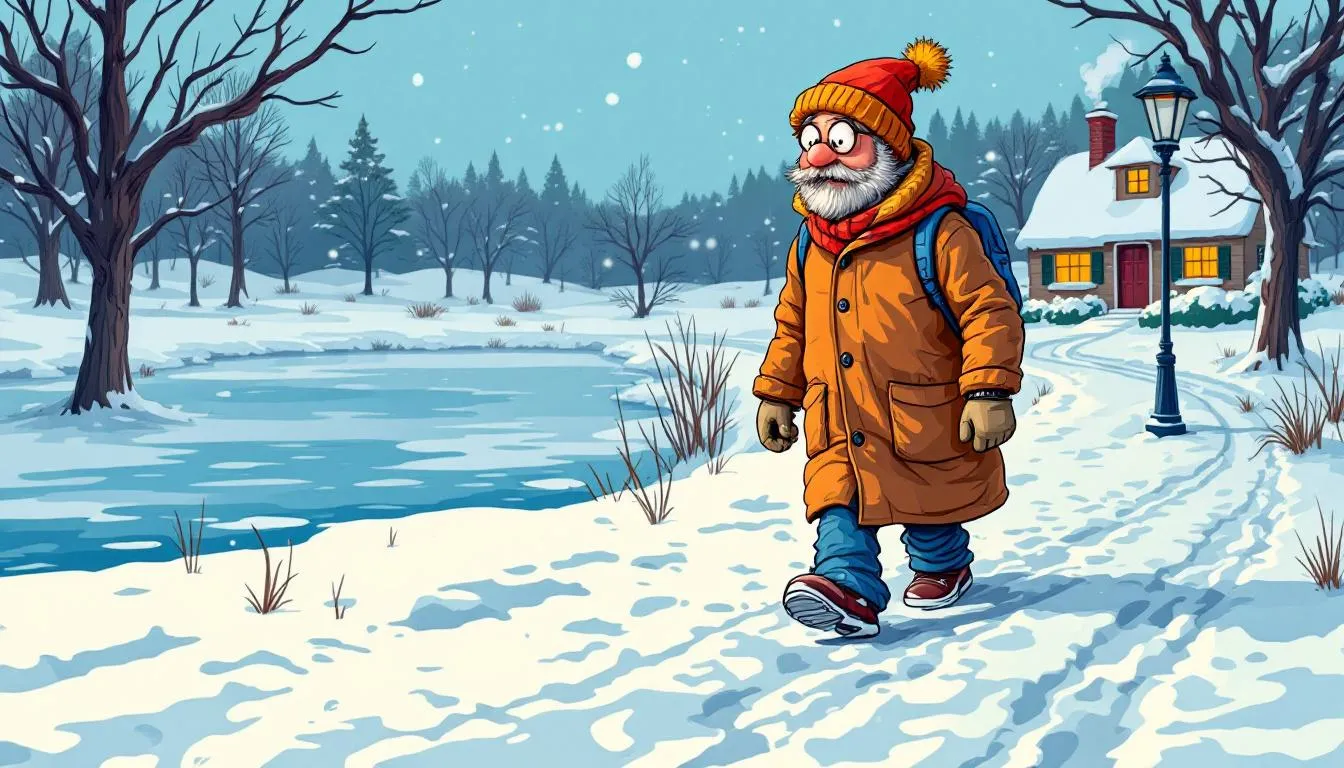
Personal safety during winter weather is paramount, especially when engaging in outdoor activities. Winter storms can lead to serious physical harm, including:
- Car accidents
- Hypothermia
- Frostbite
- Heart attacks from overexertion Taking appropriate precautions minimizes these risks and ensures your well-being.
From wearing layers of loose, warm clothing to recognizing the signs of hypothermia and frostbite, and staying hydrated, there are several strategies to stay safe during cold weather. Let’s dive into these personal safety tips to help you navigate winter safely and comfortably.
Wear Layers of Loose, Warm Clothing
Layering your clothing is a simple yet effective way to stay warm during the winter. Wearing multiple layers of loose, warm clothing traps body heat and provides better insulation against the cold. Loose clothing allows for better airflow and circulation, which is crucial for maintaining warmth.
This method not only keeps you warm but also allows you to adjust your layers as needed, depending on the weather conditions and your level of activity. Proper layering is crucial for outdoor winter activities, ensuring comfort and protection from the elements.
Recognize Signs of Hypothermia and Frostbite
Hypothermia and frostbite are serious cold stress injuries that can occur during prolonged exposure to extremely cold temperatures. Recognizing the signs of these conditions is crucial for timely intervention and treatment. Symptoms of hypothermia include:
- confusion
- exhaustion
- slowed heart rate
- slurred speech
- cold skin
- decreased coordination.
Frostbite, which can lead to tissue death, particularly in extremities, is characterized by numbness and changes in skin color. If you or someone else shows signs of hypothermia or frostbite, seek warmth and dry clothing immediately to prevent further damage. Being aware of these symptoms can help you act quickly and avoid serious health consequences.
Stay Hydrated and Avoid Caffeine
Staying hydrated is just as important in cold weather as it is in the heat. Drinking warm fluids helps maintain body temperature and keeps you well-hydrated. Avoiding caffeine is also crucial, as it can increase urination and lead to dehydration, which is more harmful in cold weather conditions.
Prioritize warm fluids and drink plenty to stay safe and healthy during the winter.
Vehicle Preparedness for Cold Weather
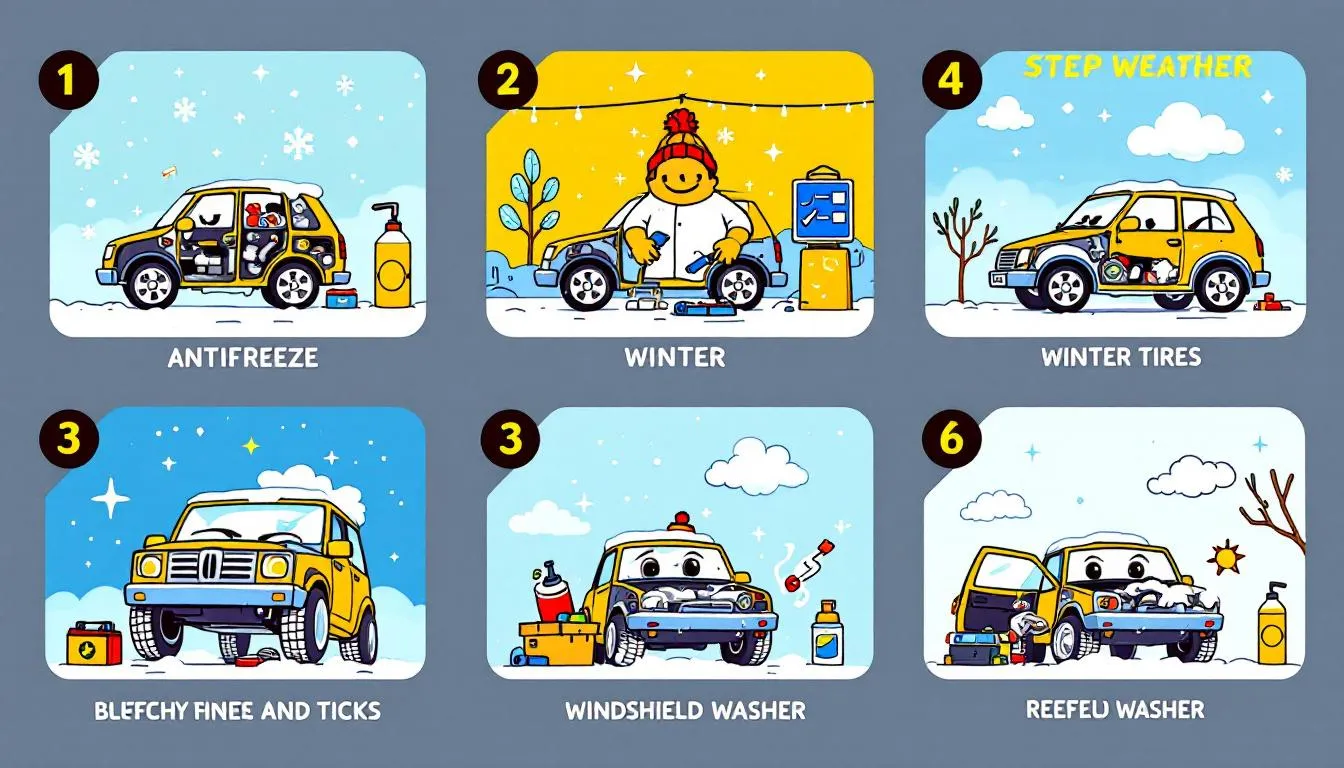
Preparing your vehicle for winter weather is essential to ensure your safety on the road. Proper vehicle maintenance and having the right supplies can make a significant difference when driving in icy or snowy conditions. Key preparations include:
- Keeping your gas tank full
- Having an emergency kit
- Regularly checking tire pressure
- Regularly checking battery health
These steps reduce the risks associated with winter driving.
Taking these steps not only helps you avoid breakdowns and accidents but also ensures you are prepared for any emergencies that may arise. Let’s explore how to get your vehicle winter-ready.
Keep Your Gas Tank Full
Maintaining a full gas tank during the winter is crucial for several reasons. It helps prevent fuel line freeze-ups and ensures you have enough fuel to stay warm if you become stranded.
Keeping your gas tank full also provides peace of mind, knowing you have the resources to handle unexpected situations.
Emergency Kit for Your Car
Having an emergency kit in your car is vital for staying safe during winter travel. You should include essential items like jumper cables, sand, and a flashlight. Additionally, pack warm clothes, blankets, bottled water, and non-perishable snacks. These supplies ensure you are prepared for any situation, whether it’s a breakdown or getting stuck in the snow.
Regularly check and update your emergency kit to ensure everything is in working order and ready to use. Including tools like a snow shovel and ice scraper can help you manage winter driving challenges more effectively.
Check Tire Pressure and Battery Health
Cold weather can significantly affect your vehicle’s performance, particularly the tires and battery. Tire pressure decreases as temperatures drop, so it’s essential to inflate your tires to the recommended pressure for optimal performance. Regularly inspecting your tires for damage and tread depth is also crucial for safe winter driving.
Similarly, cold weather can reduce battery power, making it important to check your battery’s health before winter. Ensuring your battery is in good condition can prevent unexpected breakdowns and keep your vehicle running smoothly in the cold.
Outdoor Activities and Cold Stress Prevention
Engaging in outdoor activities during the winter can be enjoyable, but it also requires careful planning to prevent cold stress injuries. Proper dressing, taking frequent breaks, and using the right techniques for tasks like shoveling snow are essential to stay safe. Following these guidelines allows you to enjoy outdoor activities while minimizing cold weather risks.
Let’s explore the best practices for staying safe and warm during winter outdoor activities.
Take Frequent Breaks and Stay Warm
When engaging in outdoor activities, it’s crucial to take frequent breaks to prevent physical exhaustion and allow your body to warm up. Regularly resting during outdoor tasks helps conserve body heat and prevents cold stress injuries.
Short breaks in warm, dry areas help your body recover from cold exposure and prevent serious injuries.
Use Proper Shoveling Techniques
Shoveling snow can be a strenuous activity, so it’s important to use proper techniques to avoid injury. Use ergonomic shovels with proper handles and lightweight designs to reduce strain on your back and arms. Lift with your legs, not your back, by bending your knees and keeping your back straight to reduce the risk of injury.
When shoveling snow:
- Scoop small amounts at a time.
- Turn your entire body instead of twisting your back to avoid strain.
- Take frequent breaks.
- Dress warmly to help maintain body heat and prevent cold stress.
Protect Exposed Skin and Stay Dry
Protecting exposed skin and staying dry are crucial to prevent cold-related injuries like frostbite and trench foot. Wearing waterproof gloves and waterproof boots can effectively reduce the chances of developing these conditions. To avoid frostbite, it is essential to wear insulated, waterproof gear, particularly on your hands and feet.
Wearing insulated, waterproof gear not only prevents frostbite but also helps maintain warmth in extreme cold. Keeping your skin protected and staying dry ensures you can enjoy outdoor activities safely and comfortably.
Power Outage Preparedness
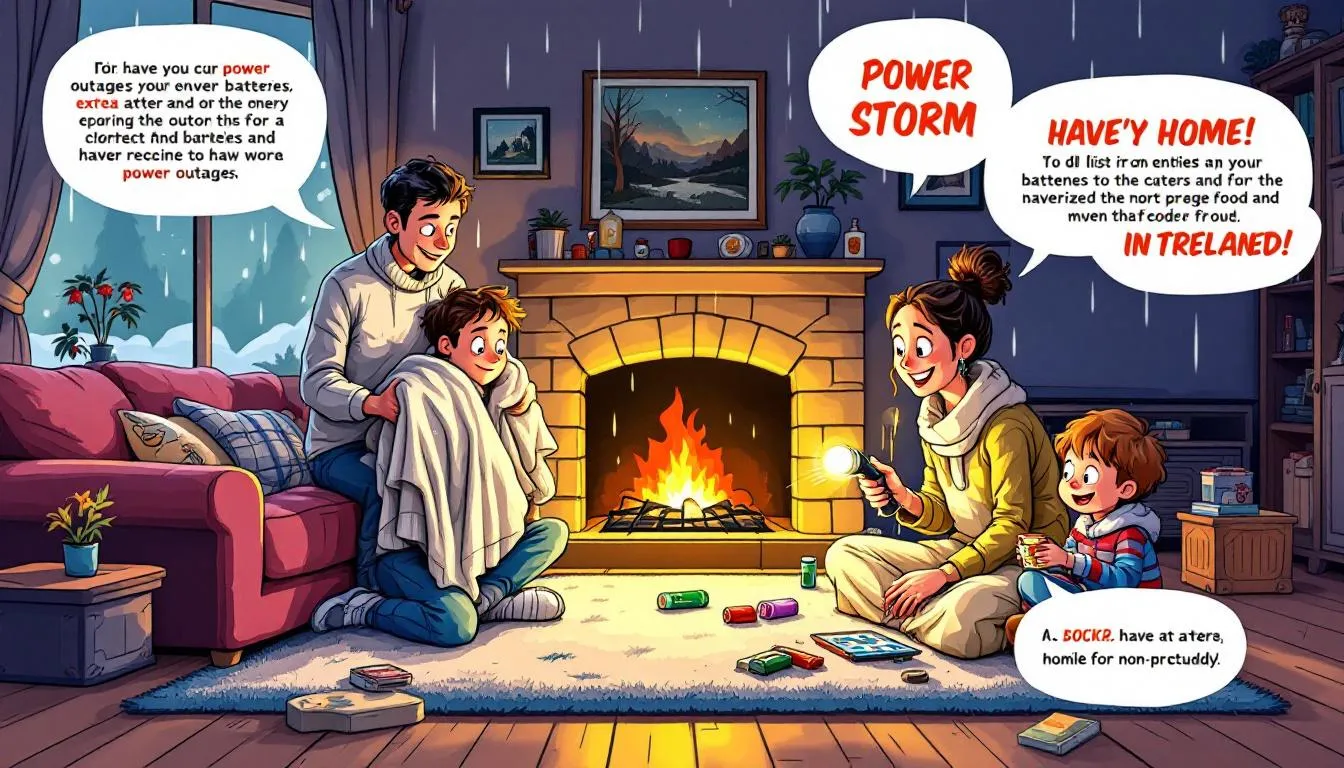
Power outages during winter storms are common and can create dangerous living conditions. Preparing for these outages is essential to staying safe and warm. Having an emergency stock of basic supplies ensures you are ready before a storm hits, including:
- Food
- Water
- Medications
- Warm blankets
Non-perishable food items that can last for several days are particularly important.
Cold stress can lead to serious health issues, including tissue damage and potentially fatal consequences. Therefore, being prepared for a power outage is not just about comfort but also about safety.
Let’s explore how to stay safe and warm during power outages.
Use Generators Safely
Generators are a great backup power source during outages but must be used safely to avoid carbon monoxide poisoning. Always operate generators outdoors in well-ventilated areas with fresh air to ensure adequate ventilation.
Never use a generator indoors or in an enclosed space, as this can lead to dangerous carbon monoxide buildup. Following these safety guidelines can keep you and your family safe during power outages.
Create a Warm Room
During a power outage, designate a room in your home to keep warm using safe heating methods and blocking drafts to retain heat. Gathering in a room with southern-facing windows can help maximize warmth from sunlight, creating a cozy environment even without power.
Using blankets or sleeping bags can help maintain warmth in this designated room. Ensure that everyone in the household stays together to conserve body heat and stay warm. When gathered, it feels warm and cozy.
Creating a warm room is a practical and effective way to manage a power outage during extreme cold weather.
Stock Up on Essentials
Stocking up on essentials is crucial to prepare for a possible power outage. Having a supply of non-perishable food and bottled water ready ensures you can stay home for several days without needing to venture out in dangerous conditions. Preparing for a power outage by gathering necessary supplies can make a significant difference in your ability to stay safe and comfortable.
Make sure to include medications, warm clothes, and emergency information in your preparations to cover all your bases. Being proactive and well-prepared allows you to handle power outages with confidence and peace of mind.
Summary
As we approach the winter season, understanding how to prepare and respond to cold weather is essential for staying safe and minimizing damage. From learning about winter storm alerts to preparing your home and vehicle, and ensuring personal safety, this guide has covered all the bases to help you navigate the challenges of winter weather.
By taking proactive steps and staying informed, you can enjoy the beauty of the winter season without the stress and hazards that come with it. Stay warm, stay safe, and embrace the winter months with confidence and preparedness.
Frequently Asked Questions
What should I do if I receive a winter storm warning?
If you receive a winter storm warning, seek shelter and gather emergency supplies right away. Stay updated by following weather reports and instructions from local authorities.
How can I prevent my pipes from freezing during winter?
To effectively prevent your pipes from freezing during winter, ensure proper insulation in walls, attics, and basements, and consider using weather stripping around doors and windows to maintain indoor warmth. Taking these measures will help protect your plumbing system.
What are the signs of hypothermia and frostbite?
The signs of hypothermia include confusion, exhaustion, slowed heart rate, slurred speech, cold skin, and decreased coordination. In contrast, frostbite presents as numbness and color changes in the skin, particularly affecting the extremities.
What should be included in a car emergency kit for winter?
A car emergency kit for winter must include jumper cables, sand, a flashlight, warm clothing, blankets, bottled water, non-perishable snacks, a snow shovel, and an ice scraper to ensure you’re prepared for harsh conditions. Being well-equipped can significantly enhance your safety and comfort in the event of an emergency.
How can I safely use a generator during a power outage?
To safely use a generator during a power outage, always operate it outdoors in a well-ventilated area to prevent carbon monoxide poisoning. Never use a generator indoors or in any enclosed space.
